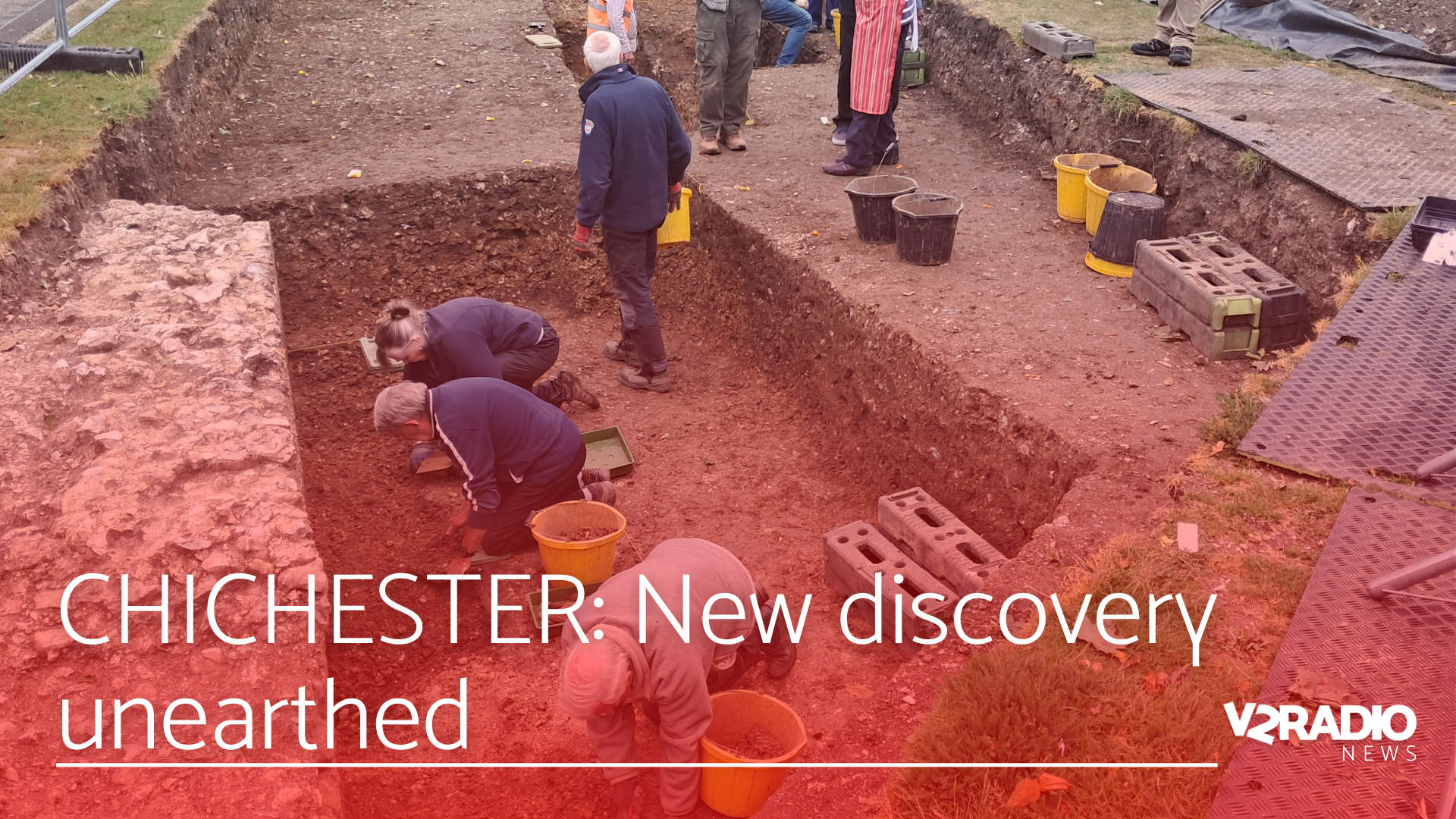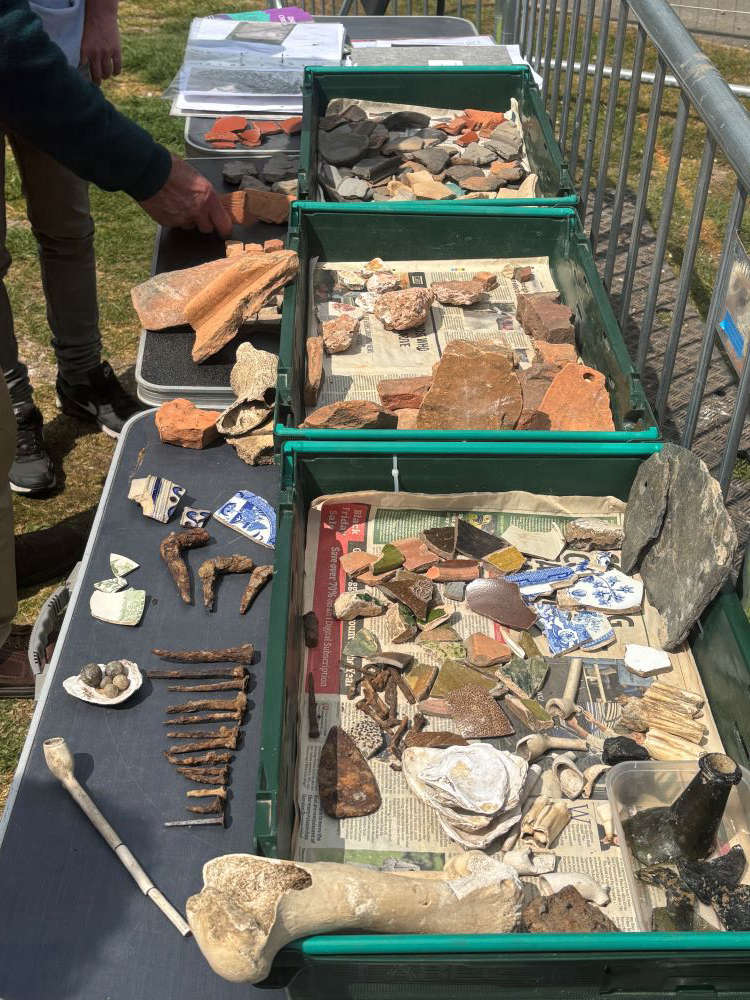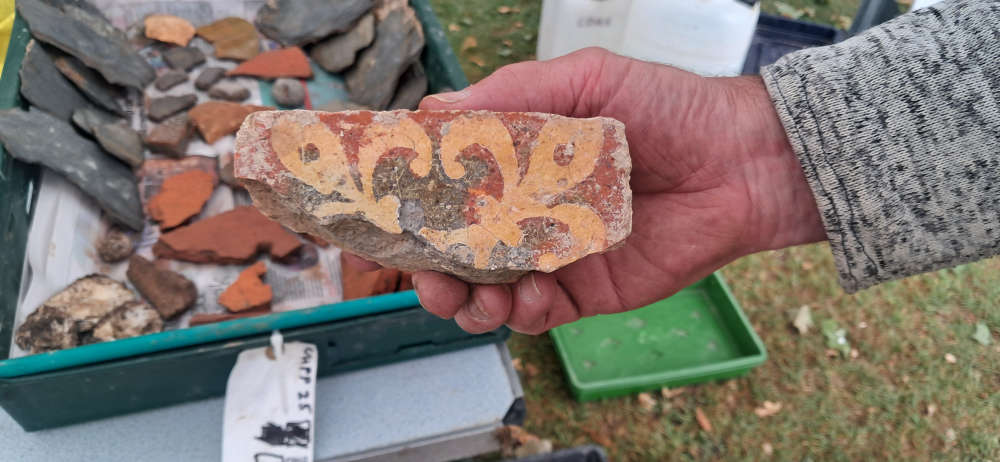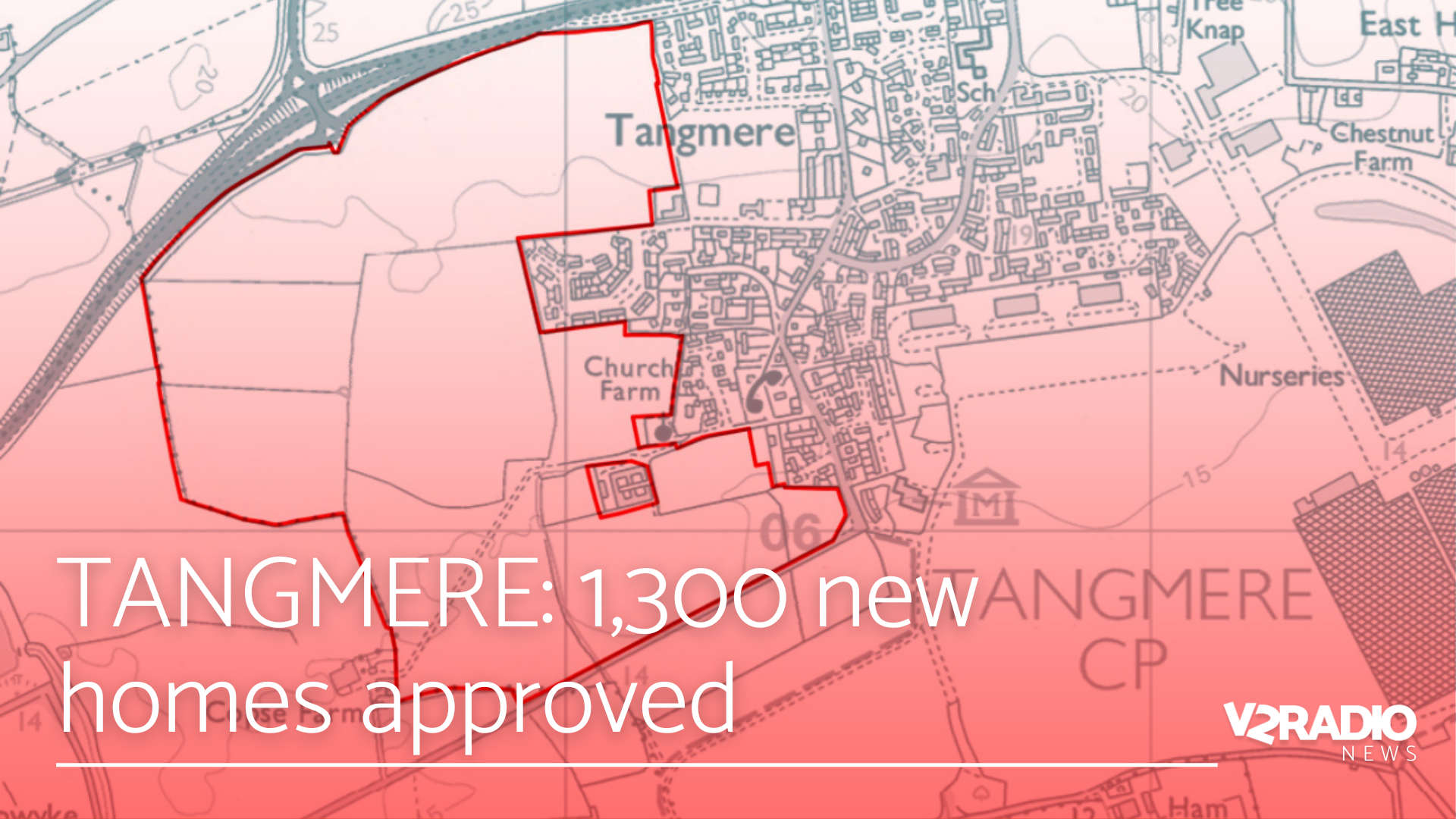
A new discovery in Chichester’s Priory Park has revealed part of the city’s medieval past.
Archaeologists have unearthed the remains of a stone barbican, a defensive tower that once guarded the entrance to the Norman castle.
The find was made during a recent two-week excavation, the eighth dig in the area. This time, the excavation concentrated on the ground north of the Guildhall.
In 2024, the team unearthed the remains of a masonry causeway and bridge that would have led to the motte and bailey castle, as well as part of a ditch that surrounded it.
This year’s aims were to find the inside edge of the ditch and to dig deeper to find out its depth and reach the bottom of the masonry foundations.

“Until we uncovered the stonework, it was believed that the castle was purely a timber structure, but the discovery of a robust masonry causeway — and now tower — means that the castle was rebuilt in stone, something that could only have been sanctioned by someone in authority,” says James Kenny, Archaeology Officer at Chichester District Council. “This is hugely exciting because it places this castle and the importance of this area in a different light to what we previously thought.”
The structure runs 1.7 metres from the foundation to just beneath ground level. And was around 6 metres by 10 metres in plan.
“This makes it extremely substantial,” adds James. “The next piece of the jigsaw is to find parallels elsewhere for this sort of structure and to establish who ordered it to be built — it was clearly a person of great authority. The two most likely candidates are the Earl of Arundel (mid-12th century) or, if it was built later, Henry II.
“The castle was built to reinforce the power of the feudal lord of the time and would have been built to impress and dominate using the finest architecture and best stonemasons of the time.
“It’s been a very exciting conclusion — these sorts of archaeological discoveries do not happen often in a lifetime, and it’s certainly the finest piece of medieval architecture that I’ve ever excavated.”
During the dig, the team also found some remains of the Medieval Franciscan friary that once stood on the site, including examples of its decorated floor tiles.
A special public day took place on Saturday 31 May, where James gave a series of talks about the team’s discoveries, which were attended by hundreds of people.
All the findings will now be recorded in detail, and work will take place to determine whether it will be technically possible for some of the remains to go on permanent public display. This would be part of a separate project and subject to obtaining external funding.
“These excavations always throw up some wonderful new information about our local history and this year is no exception,” says Councillor Bill Brisbane, Cabinet Member for Planning at Chichester District Council. “The discovery of a barbican is amazing and really changes our previous understanding of the castle.
“It’s also fantastic that residents and visitors have been able to watch and see this local archaeology in action and witness the painstaking work that goes into understanding more about our past. I’d like to thank all the volunteers that have helped with these digs over the years — I know the team have received some very positive feedback following this year’s work.”
People can learn more about the work of the Chichester and District Archaeology Society at: www.cdas.info


 Unfair bonuses banned for water company executives, including Southern Water in the South
Unfair bonuses banned for water company executives, including Southern Water in the South
 Portsmouth MP steps up campaign to ban conversion therapy practices
Portsmouth MP steps up campaign to ban conversion therapy practices
 1,300 new homes approved for Tangmere
1,300 new homes approved for Tangmere
 Underwater robots deployed in Bognor sewers as part of £4 Million clean-up project
Underwater robots deployed in Bognor sewers as part of £4 Million clean-up project
 Worthing community groups invited to apply for funding
Worthing community groups invited to apply for funding
 Dog attack in Polegate
Dog attack in Polegate
 VIDEO: Bracklesham Bay mother raising £100K for her cancer treatment
VIDEO: Bracklesham Bay mother raising £100K for her cancer treatment
 Two teenagers charged in connection with death of Littlehampton man
Two teenagers charged in connection with death of Littlehampton man
 ID appeal after multiple attempted vehicle break-ins
ID appeal after multiple attempted vehicle break-ins
 Portsmouth councillors look again at the city's approach to regulating Houses in Multiple Occupation
Portsmouth councillors look again at the city's approach to regulating Houses in Multiple Occupation






